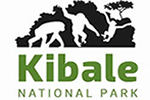Think of that one most thrilling primate safari experience in East Africa and consider Kibale Forest National Park a must to visit and you won’t be left in regrets. The 795 square kilometer park is strategically situated in western Uganda and it was established in 1993 with aim to offer refuge to its distinct wildlife species.
Chimpanzee tracking in Kibale national park is one of the activities that make safaris in Uganda very unique and memorable; combined with gorilla trekking, the two experiences are like no other not only in Africa but world over.
Kibale national park is located in between Kabarole and Kibale districts about 330 km from Kampala by road and one of the very few precious tropical rain forests that are still exist in Africa.
Kibale forest national park is arguably the world’s primate capital which makes it a prime destination not only for chimpanzees but also other primates, mammals and abundant birds.
Kibale has lovely and most varied tracts of tropical forest in Uganda and it accommodates a vast number of over 70 mammal species, with the most famous being 13 primate species including chimpanzees, over 300 bird species and a variety of colorful butterflies. Other apes in the forest which play a big role to boost the primate walks here include Red colobus monkeys, endemic Uganda Mangabey, L’Hoests monkey, olive baboons, bush baby, red tailed monkey, black and white colobus monkey, blue monkey and many others.
Kibale national park also protects the large mammals such as forest Elephants, buffaloes, and Giant forest hogs, Sitatunga antelopes, bush pigs, duiker, golden cats and Leopard which is seen occasionally. The best Chimpanzee tracking experience in Kibale forest comes handy with birding safaris, where travelers are able to spot the notable forest birds and Rwenzori endemics resident in this forest.
Mammals
At least 60 mammal species are present in Kibale Forest. The park hosts large mammals which include: lion, leopard,elephant,buffalo,hippo,warthog,giant forest hog,bushpigs,bushbuck,sitatunga,and peter’s,red and blue duikers. The elephants found in Kibale Forest are classified as belongings to the forest race, which is smaller and hairier than the more familiar savanna elephant. Elephants frequently move into the Kanyanchu area during the wet season, but they are not often seen by tourists.
Primates
It is particularly rich in primates, with 13 species recorded, the highest total for any Ugandan national park. More than 13 distinct primate species are all confined within this protected area and they include the 1500 chimpanzees, olive baboons, grey cheeked mangabeys, L’Hoest monkeys, blue monkeys, red tailed monkeys, black and white colobus monkeys and others.
There are nine diurnal primates found at kibale are vervet, red-tailed, L; Hoest’s and blue monkeys, grey-cheeked mangabey, red colobus, black-and-white colobus, olive baboon, and chimpanzee. The Kibale forest area is the last Ugandan stronghold of the red colobus, although small numbers still survive in Semliki National Park. Visitors who both the forest and the swamp walks can typically expect to see around five or six primate species.
Birds
Roughly 335 bird species have been recorded in any other national park: Nahan’s francolin, Cassin’s spine tail, blue-headed bee-eater and masked apalis. Otherwise, the checklist for Kibale includes a similar range of forest birds to Semliki National Park, with the exclusion of the 40-odd Semliki ‘specials’ and the inclusion of a greater variety of water and grassland species.
There are 350 bird species including the African green breasted pitta, bee-eaters, black eared ground thrush, little greenbuls, yellow romped tinker bird, red faced woodland warbler and others. It also boasts of its magnificent tropical rain forest, patches of grassland, swamps and others.
Unique Flora
Kibale National Park is blessed with more than 250 species of trees including cordia millenii, lovoa swynnertonni, etc. This makes this Uganda safari park an ideal research spot to explore different tree and plant species of medicinal importance.
Butterflies
A total of about 250 colorful butterfly species all live in Kibale National Park making it a potential butterfly watching spot in Uganda. These can be watched while on guided nature walk or forest walk, chimpanzee trek, etc.
Crater Lakes
Kibale National Park is strategically located in an area endowed with beautiful Crater Lakes such as Ndali-Kasenda Crater. This crater lies close to Kibale and Queen Elizabeth National Park and it is a remarkable natural feature formed due to volcanic action. The Ndali-Kasenda Crater Lakes have existed here for over 10,000 years.
The numerous crater lakes located in the various directions of Kibale National Park and worth visiting on Uganda safari include Lake Lyantonde, Lake Nkuruba, Lake Nyabikere, Lake Kifuruka, Lake Nyanambuga, etc. A visit to these magnificent Crater Lakes allows you enjoy excellent views of the lush tropical Kibale Forest, go nature walk, hike etc.
